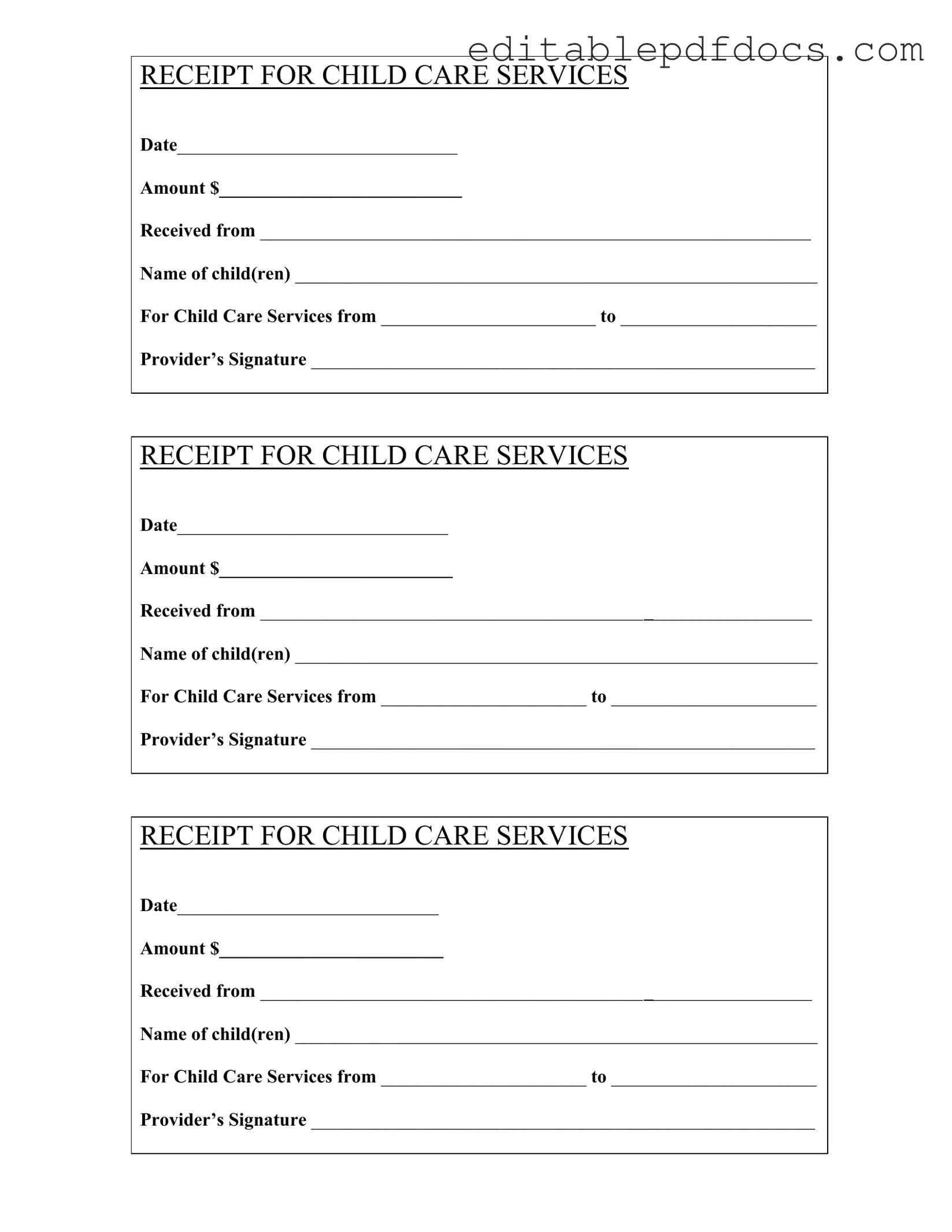When filling out the Childcare Receipt form, individuals often make several common mistakes that can lead to confusion or delays. One frequent error is failing to include the date on the receipt. This information is crucial for record-keeping and verifying the period of care provided. Without it, the receipt may not be valid for tax purposes or reimbursement claims.
Another mistake is neglecting to specify the amount received. Leaving this section blank can create uncertainty about the payment made for services rendered. It is essential to clearly state the total amount to ensure both parties have a mutual understanding of the transaction.
Many people also forget to fill in the name of the child(ren). This detail is important for identifying which child received care, especially if multiple children are involved. Omitting this information can lead to complications when submitting the receipt for tax deductions or other benefits.
Additionally, individuals sometimes overlook the section for the provider’s signature. This signature serves as confirmation that the childcare provider acknowledges the receipt of payment. Without it, the receipt may not be considered legitimate, potentially causing issues during audits or when seeking reimbursements.
Another common oversight is incorrectly filling in the dates of service. It is vital to specify the correct start and end dates of the childcare services provided. Errors in these dates can lead to disputes or misunderstandings regarding the duration of care.
Some people fail to keep a copy of the receipt for their records. This can be problematic if the original is lost or if there is a need to reference the transaction later. Keeping a copy ensures that you have documentation available for any future inquiries.
In some cases, individuals might not provide accurate contact information for the childcare provider. Including this information can facilitate communication if there are any questions regarding the receipt. It is advisable to ensure that the provider's name and contact details are clearly noted.
Another mistake is using an outdated version of the form. Always ensure that you are using the most current version of the Childcare Receipt form. Using an old form can lead to confusion and may not meet the requirements set by tax authorities or reimbursement programs.
Finally, some people rush through filling out the form, leading to typos or missing information. Taking the time to carefully complete the form can prevent these errors. Double-checking all entries before submission will help ensure accuracy and completeness.
